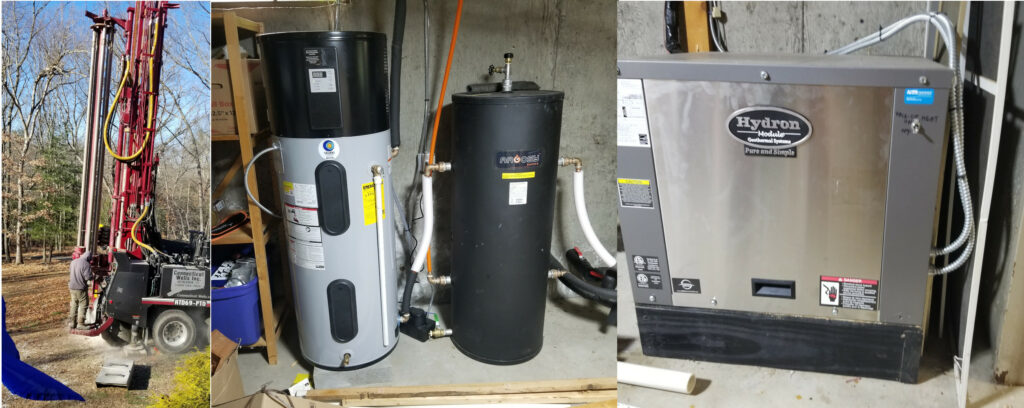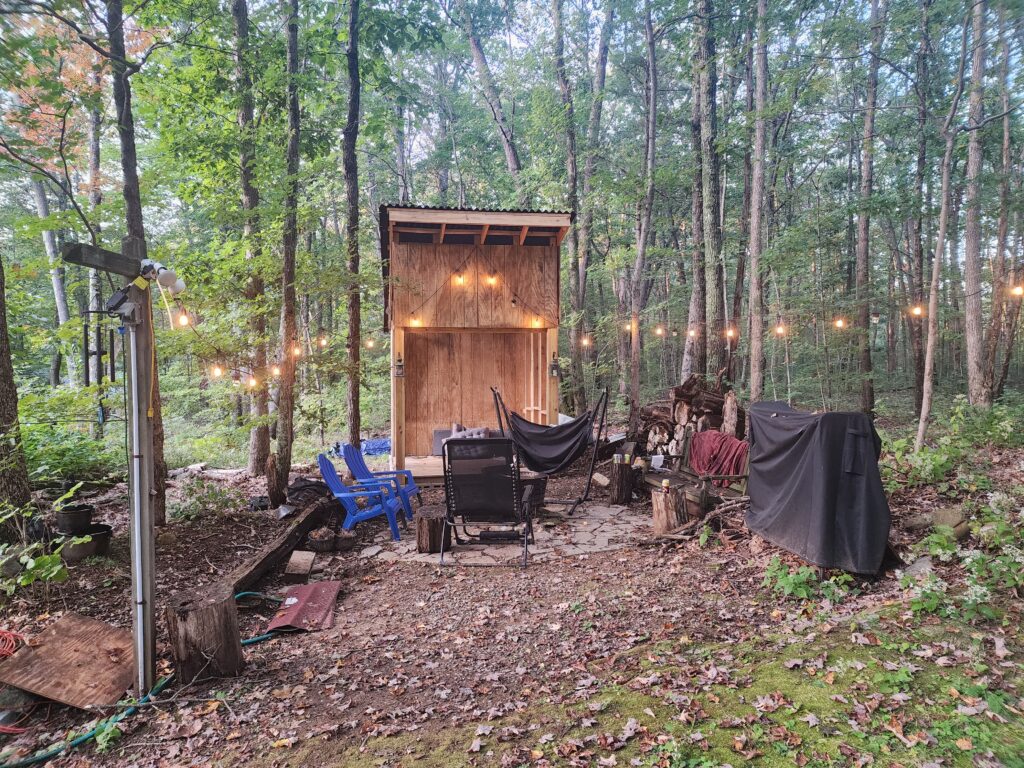Our journey to a carbon neutral home – if we can do it, anyone can!
In February of 2016, I met the love of my life, Jen – we moved in together after a few months of dating and got married in July 2017. We’re unbelievably well matched and we couldn’t be happier!
At that time, we were living in downtown Milford, MA, upstairs from a fairly raucus bar. The landlord threw us out because I didn’t think Brett Kavanagh belonged on the Supreme Court, but that’s a whole other story. Suffice it to say that we should thank him, because that started us on the journey to where we are today.
We got an apartment in town when the dust settled from that, I had a better job with better pay than when we first met, and we decided we had to start house hunting. My job allows me to work from home full time, so where the house was located didn’t matter as much, and with real estate prices in Massachusetts just about out of reach, Jen started researching northeast CT. She found several great places, but one in particular that we loved, so we made an offer, it was accepted, and we were homeowners! We moved in on Nov 15, 2020, the proud owners of an 8 room, three bedroom raised ranch with 2 full baths and an outbuilding on almost 2 acres of land. Best of all, I had lived in this town when I was in college, a lifetime ago, and it’s great to be back.
The house was heated by oil with forced hot water, and did not have central air. Our first major renovation was to install a ground-sourced geothermal heating and cooling system – we removed the oil furnace (it was only 3 years old) and donated it to Habitat for Humanity. I knew about geothermal systems from my years of environmentalism, but I wasn’t up on the latest trends – Jen was bubbling over with info about how great they are today, and I was stunned at the newest info. The system went live in late February, 2021, along with an electrical service upgrade to 200 Amps.
The system uses a ground loop filled with anti-freeze so that there’s a constant heat/cool source at 55 degrees F. They drilled a single well 380 feet into the front yard and trenched over to the side of the house where the furnace room was located. In the winter, the system will cool that antifreeze and use the heat to warm the house, through ductwork we had installed along with it. In the summer months, the system is reversed and it uses the ground loop to cool the house VERY efficiently. Our first summer, we kept the house at 73 degrees 24 x 7, and our biggest electric bill was $150. We also have an super efficient air-sourced heat pump water heater, with a pre-heat tank so that any heat left in the system pre-heats our hot water before being applied to the ground loop. Essentially, in the warmer months, we get free hot water by running the air conditioning, and our hot water still gets a boost during the cooler months when we’re running the heat.

About a month after the geothermal system went in, we had the house insulated through a state/utility program. We had to pay $3,500 for over $7,500 worth of insulation – $500 out of pocket, and $3,000 financed at 0% on our electric bill. Part of the financing for the geothermal system is also on a loan paid on our electric bill, and part of that is a bank loan at 3%. These loans are available to Connecticut residents through the Green Bank – interest rates are likely higher now than they were in 2020, but the system will pay for itself over time.
Heating in the winter is still expensive – about $300 more on every electric bill in the winter, which eats up the credits our solar power system (more on that later) earned in the summer pretty quickly. We will have an electric bill to pay this winter, but it’s minimal, around $1,000 for January and February- but that pays for heating, A/C, hot water, lights, transportation, and all of the other things we own that use electricity, for the entire year! Even with the loan payments and the cost of the electricity we use over and above what the solar can provide, we’re still saving money when oil is priced where it is today.
In June of 2020, I got tired of fixing yet another cracked thermostat housing on my 2012 Chevy Cruze (it was the 3rd or 4th time I had to do that), so Jen and I went looking for wheels. We found a used Hyundai Ioniq, an EV with decent range, for $19,000 – sold! The electrician who worked on our geothermal install came back and installed an outlet for the car charger in the garage. The car is great, and it’s perfect for the type of things we need to do in our area, but we do need to plan our longer trips by knowing where we can stop for a charge.
Next up was solar power. I work for a solar power firm in MA, but we’re not licensed for work in CT, so I went in search of a good company to do business with. I found Aegis Solar, and they took excellent care of us with a system with 30 LG 375 watt panels and Enphase micro-inverters, the best in the business and the same products we use where I work. We financed it through a state program at 3% interest, and in mid February of 2022, that system went live. So far, we’ve generated almost 20,000 kWH of power. In the spring, summer and fall months, we make more electricity than we use, and those extra kilowatthours are banked for the winter months, when we consume more than we geberate. We also use our wood stove in the winter to alleviate some of the electricity usage for heating.
Lastly, we had new windows installed. We found an installer who did Pella windows at a reasonable price – 10 new windows installed at just over $1,200 each. These windows should deliver excellent performance versus the 30 year old wood frame windows we replaced – those are stacked outside for use in an eventual greenhouse, but a different project is taking up the builder’s time these days, as we’re adding an outdoor wet bar and movie theater to our fire pit.

The only carbon footprint we have left is the LP gas on our BBQ grill and a couple of butane lighters. We’re looking at electric and/or wood pellet BBQ systems to replace the grill when it finally quits, but we’ll make do for now with LP gas. Our combined payments on all of those – geothermal, insulation, solar panels, and new windows is about $1,000 monthly – we would be paying more than that if we still used oil for heat and paid an electric bill without solar.
If we can do it, anyone can! Contact me here if you’d like more info, I’m happy to share.
